23 Packing and Moving Tips from Someone Who Has Moved 40+ Times!
20 min readAs a travel blogger, I consider myself pretty decent at packing for trips. I usually do a good job of packing light and only bringing what I really need. But...
The post 23 Packing and Moving Tips from Someone Who Has Moved 40+ Times! appeared first on Teaspoon of Adventure.
As a travel blogger, I consider myself pretty decent at packing for trips. I usually do a good job of packing light and only bringing what I really need.
But when it comes to packing and moving houses, I’m an expert.
Because as of 2025, I am currently in my 42nd home. Yes, you read that right!
You might be wondering: How has a 32 year old managed to live in 40 different homes?
Well, it’s a combination of moving across the country a few times, living/studying/working abroad, having divorced parents who moved often, and never staying still for too long.
I can probably count the number of places I have lived in for more than a year on one hand!
So while packing and moving homes is never fun, I’ve learned lots of ways to make the process less painful.
I know people spends months agonizing over what to pack, how to pack, the best way to move, etc. Let me use my 40+ moves worth of experience to make your next house move a little less painful!
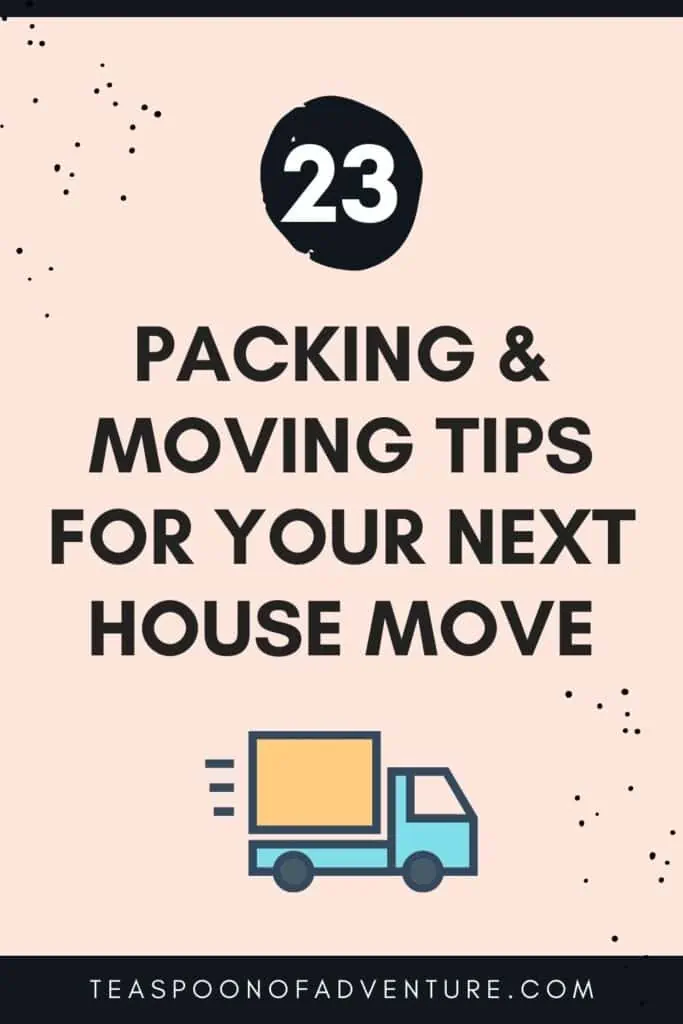
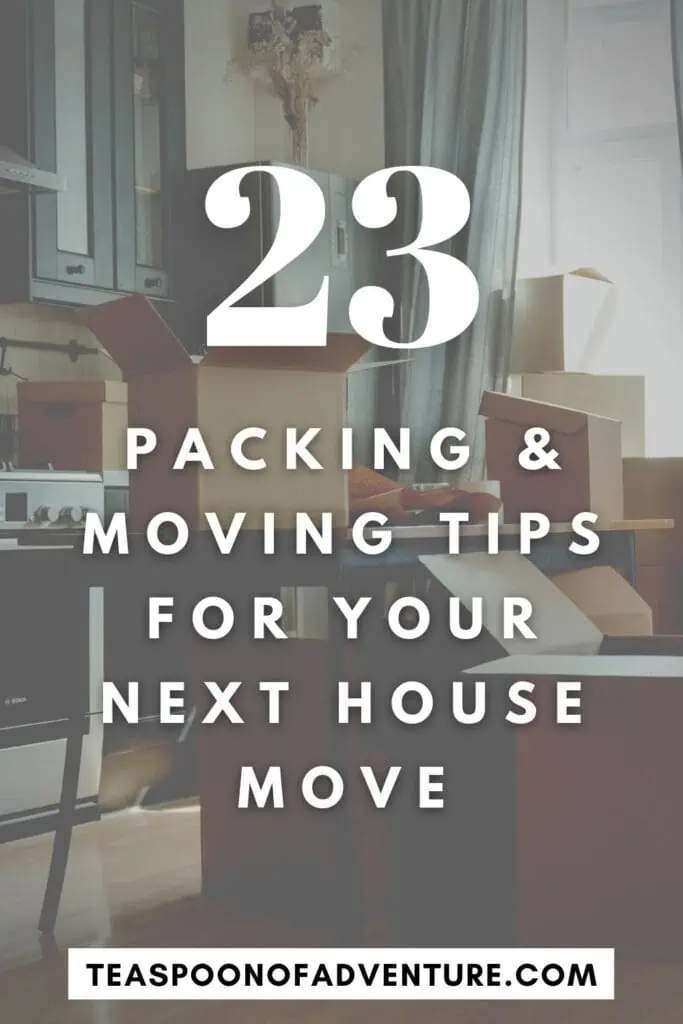
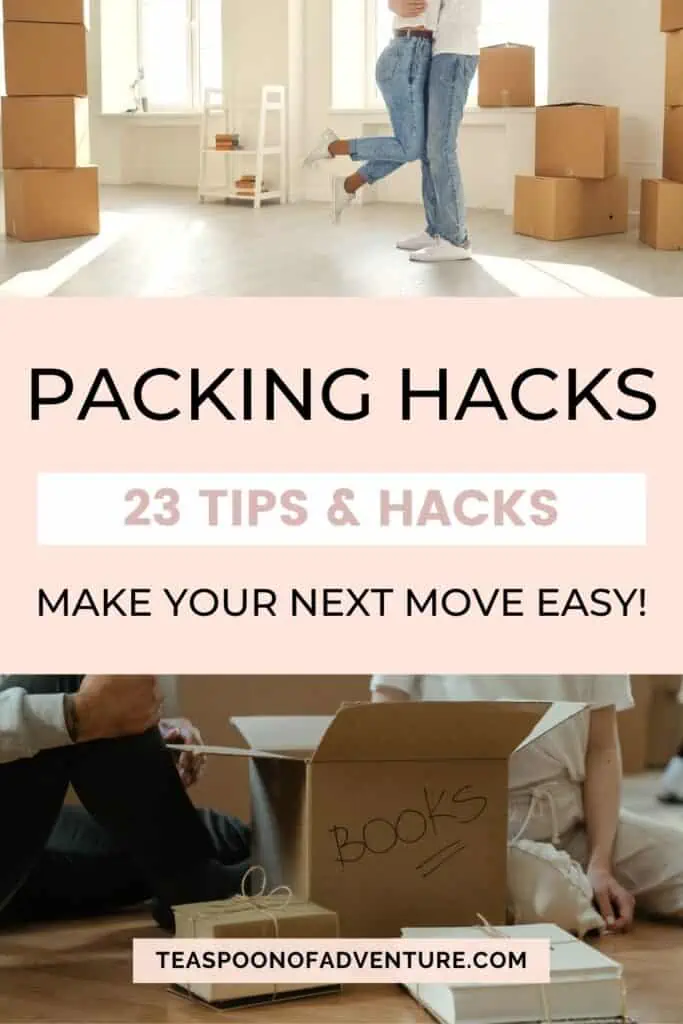
Let’s dive into my 23 moving & packing tips to make your next house move as painless as possible!
1. Start the packing and moving process early
My best packing and moving tip is to start early. It is a way easier and less stressful process when you can slow down, take your time, and plan how to best move and pack.
The times I have had to move in a hurry (like when we moved out of our Prague home with less than 24 hours’ notice due to covid!) were always panicked and stressful.
When you start early, you can give yourself little goals. For example, you can have the goal of packing one box per day or perhaps tackling one room per week.
Starting early also gives you time to adjust to any changes in your plan, such as a moving date being changed, movers being unavailable or needing more storage space than you thought. You can get more boxes, call new movers and pivot.
How early is early enough? You know yourself best. If you’re someone who wants to carefully wrap every single item or reminisce as you go, give yourself more time.
How early will also depend on the type of move you’re doing. It only takes so long to pack up a dorm room or sparse studio apartment. Obviously a 3000 square foot home you’ve lived in for 20 years is going to take a lot longer.
My advice? At minimum, start the packing process one month in advance. And what should you pack first? Find out below!
2. Purge your belongings before you go
I’m a firm believer that you shouldn’t pack crap you don’t need. I’ve had people (cough *my husband*) tell me that we should just pack up everything and go through it once we get to the new place.
But in my opinion, that’s a waste of time, space and effort.
Don’t spend time packing up stuff you don’t want, don’t devote precious space in the moving truck to stuff you don’t want, and don’t spend the extra effort packing stuff you don’t want.
This is another reason why you want to start the packing process early: Now you have time to go through all of your things!
Before I put anything in boxes, I go through sections of my home and categorize my items: keep, donate, sell and toss.
From there, I have a better sense of how much time and how many boxes I will need for the actual packing. For items you want to donate or sell, Facebook is a convenient option.
You can list items for sale on Facebook Marketplace and join your local Buy Nothing group for items you want to donate. Everything can be arranged from your phone and people will come to your door to pick up – no work for you!
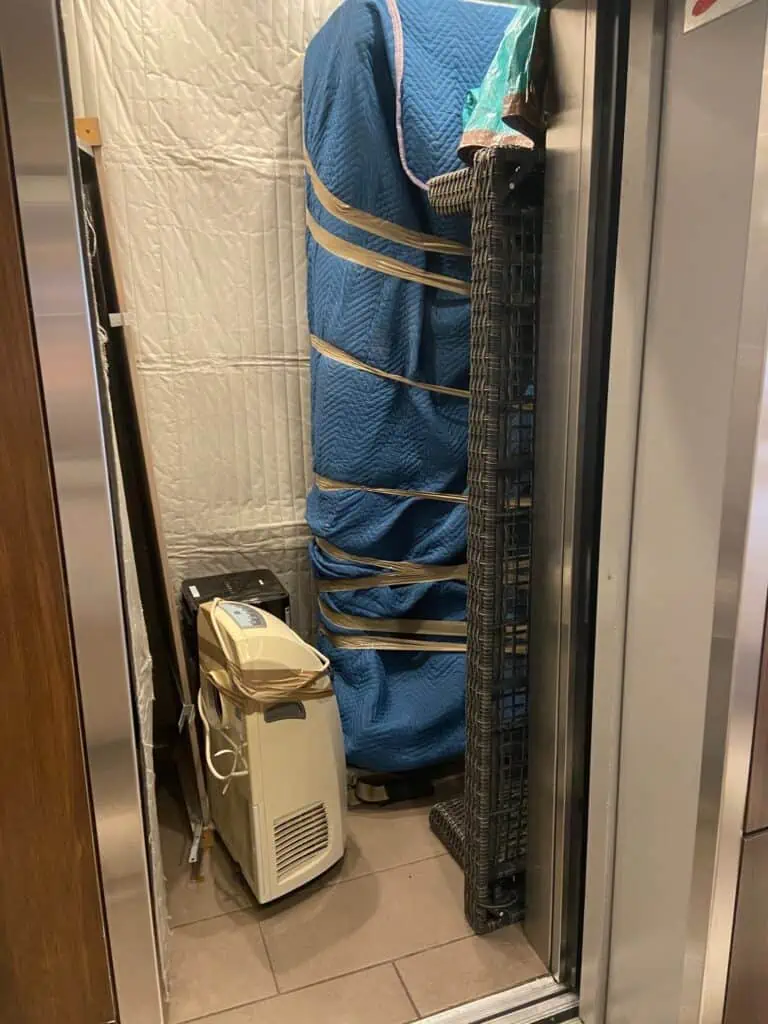
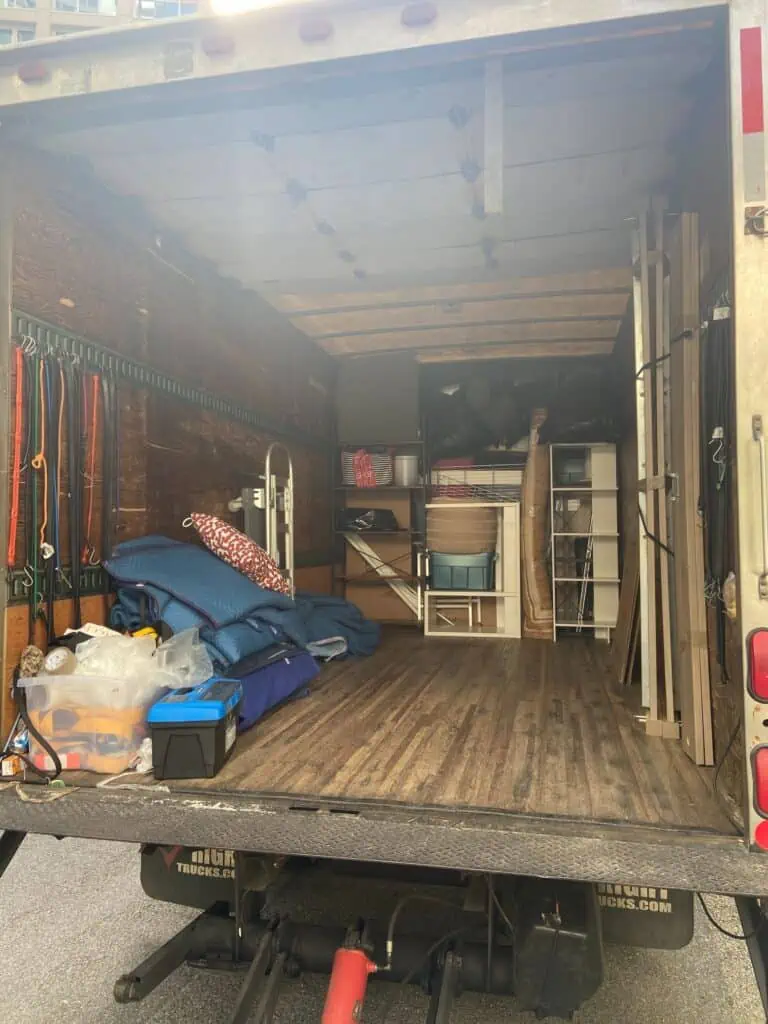
3. Hire movers (if you can)
After way too many DIY moves, my husband and I finally hired movers for our most recent move in Vancouver in 2022. And I have to say, movers are absolutely worth it!
My 30+ year old back thanks me every single day that I didn’t try to move a storage locker full of stuff, two couches and a king mattress by myself.
Not only do movers save you a lot of physical anguish and effort, they also save you a lot of time.
Assuming you work with a reputable company, your movers should be professionals who know how to quickly and safely move your things. What would take you a full day, they should be able to do in a couple of hours.
For our last move, our incredible movers managed to fit all of our stuff into a very tiny storage unit thanks to their next-level Tetris skills.
If we had done it by ourselves, not only would it have taken longer (and hurt my back!) but we would’ve had to rent a second storage locker to fit everything, costing us way more money.
I know movers are expensive and not something everyone can afford. But if you can, I highly recommend it!
Before hiring movers, make sure to:
- Do your research (read reviews or get a recommendation)
- Check the fine print (will they bill you extra if there are stairs or if you go over time?)
- Book ahead (especially if you’re moving on a busy day, like the 1st of the month)

4. Create a list of things you need to book or set up for easy packing and moving
Moving house isn’t just about packing up your things and bringing them to a new place. There’s a ton of admin that is involved.
Besides packing, here are a few things you may need to do for your move:
- Book the elevator in your building for your move-out and/or the elevator in your new building for your move-in. This may require paying a moving fee or damage deposit.
- Close out your utility accounts and open new ones for your new address.
- Move your internet service to your new home and arrange for a technician to install it (book this ASAP so you’re not without wifi for long!).
- Forward your mail to your new address and change all of your billing and mailing info (credit cards, Uber, Amazon, etc.).
- Rent a storage locker.
- Hire movers.
- Hire cleaners.
And that’s just admin for the actual move! What if you’re selling and/or buying a place?
If that’s the case, you’ll have a lot more admin work to take care of with your realtor, mortgage broker, lawyer, etc. I highly recommend sitting down and listing out everything you’ll need to do (because it is A LOT!).
5. Decide on what kind of boxes you want to use
When it comes to moving there are three types of boxes/bins you can use: cardboard boxes, reusable bins you own, or reusable bins you rent.
Let’s break them down so you can decide what works best for your next house move:
Cardboard boxes
- Pros: can be acquired for free (check Facebook Marketplace, Buy Nothing or your local grocery store)
- Cons: not reusable, might be a hassle to get, not always the right size or sturdiness level
Reusable bins you own
- Pros: heavy duty, can be used for storage and any future moves
- Cons: upfront cost to buy them, need a place to store them between moves
Reusable bins you rent
- Pros: heavy duty, get delivered and picked up so you don’t have to store them
- Cons: can be costly to rent, will need to pack and move on the company’s timeline
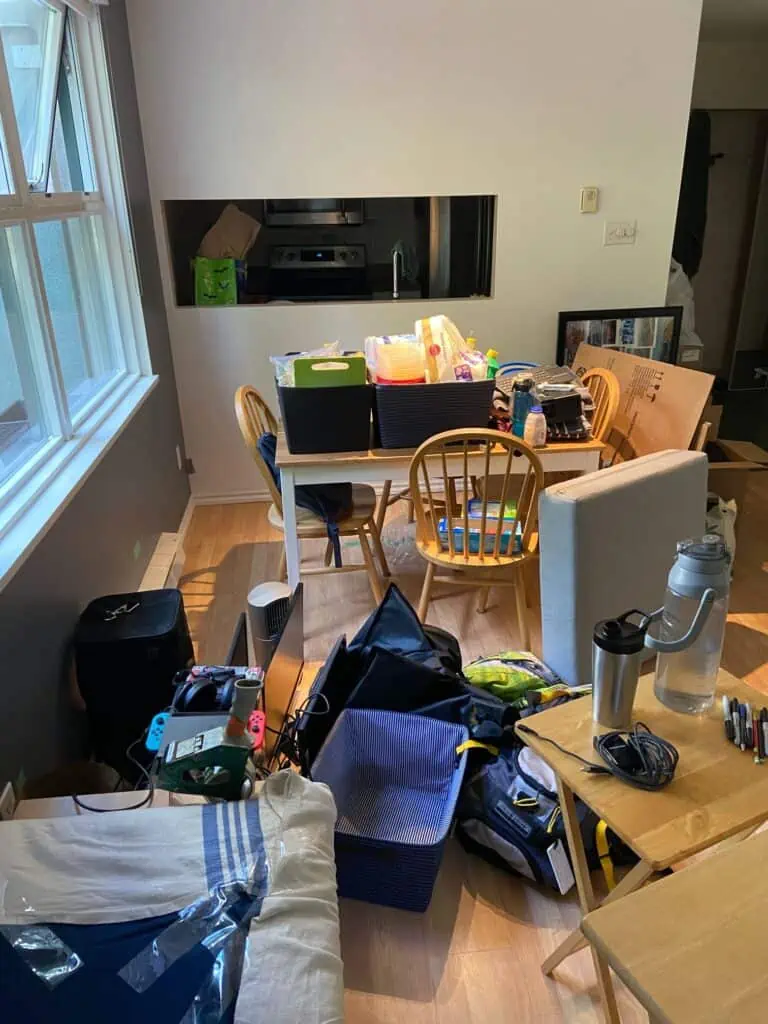
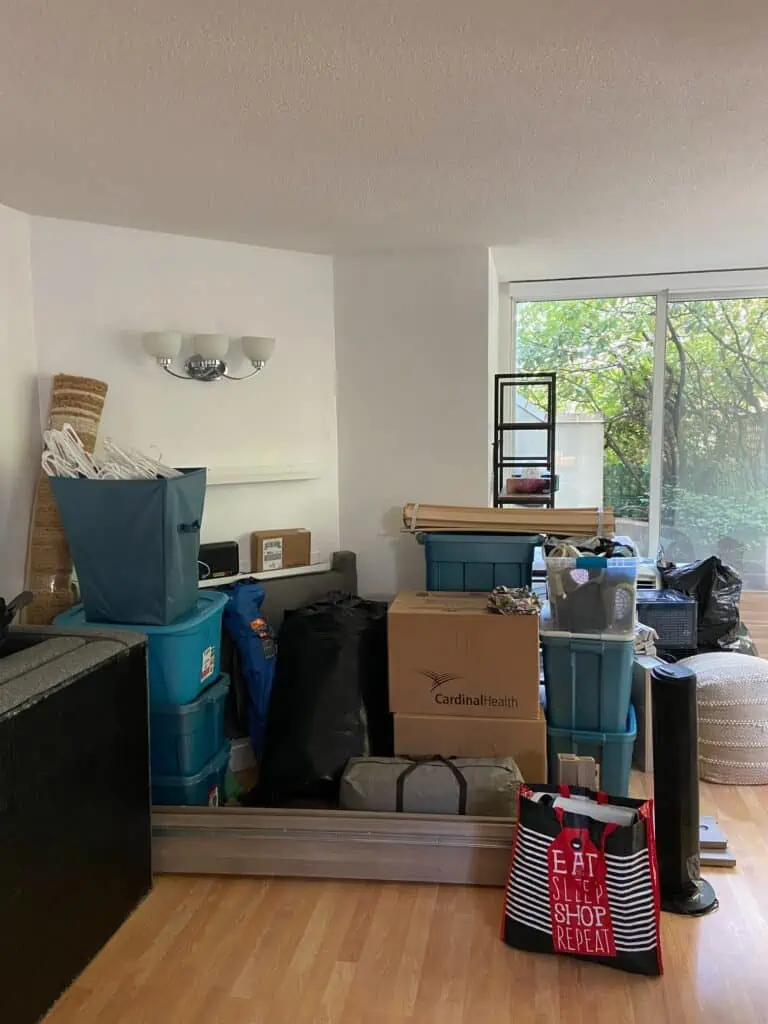
I like to use a combination of reusable bins we own and cardboard boxes when we fill all of our Rubbermaid bins.
Because we move often, it’s handy to have bins we own and can rely on. We also use the bins in between moves as storage.
Plus, we acquired the bins from my mom after her cross-country move, so the upfront cost was $0!
And in case it has to be said: Yes, you should pack into boxes or bins.
It is way more efficient and easier on movers (whether that’s your friends or professionals) to carry well-packed boxes than it is to have to carry all of your stuff by hand or in bags.
Don’t be that person who has to make 50+ trips to the moving van carrying one tote bag of stuff at a time!
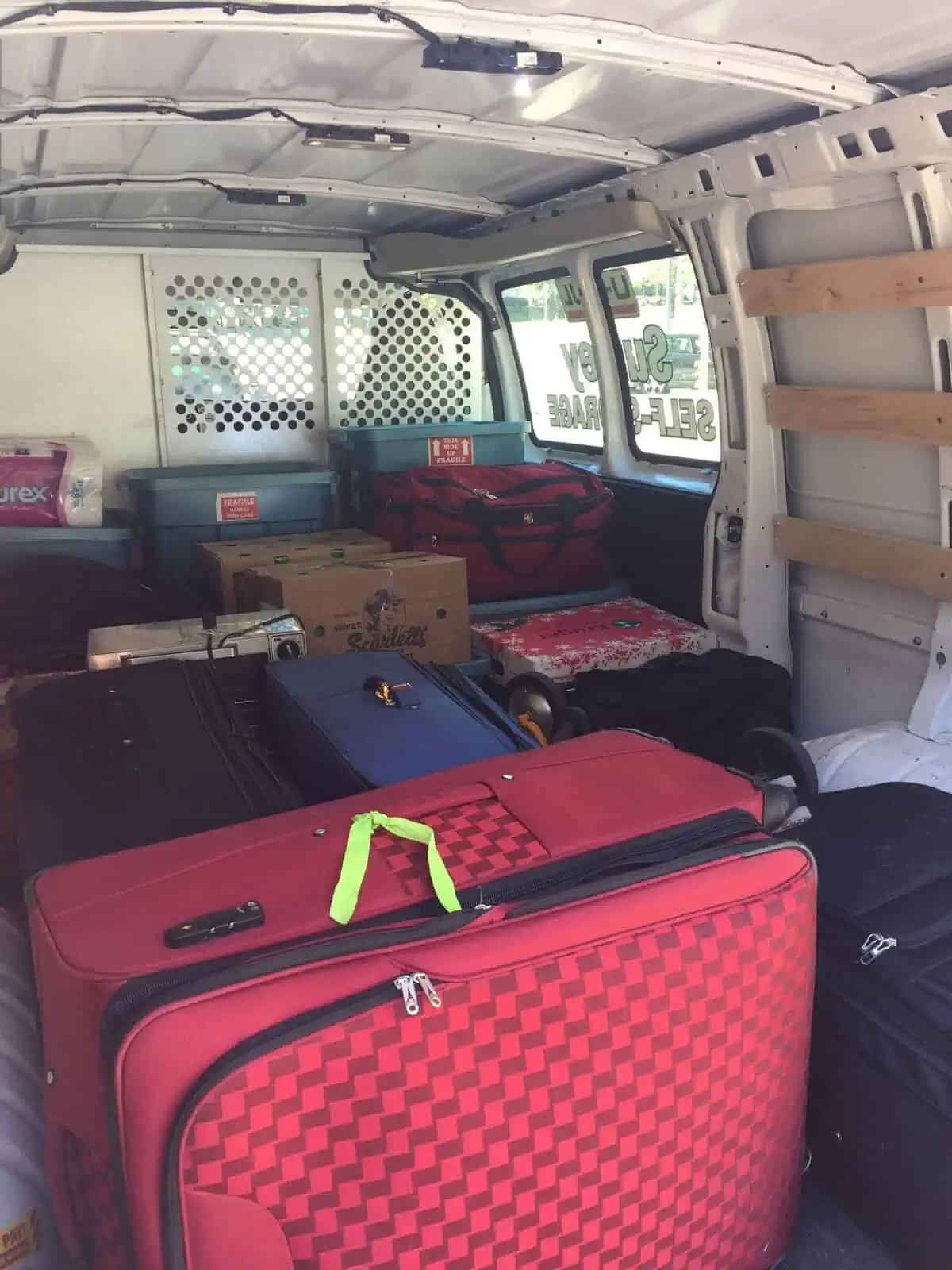
6. Label boxes with numbers and keep a detailed list on your phone
When it comes to labelling moving boxes, there are a few different schools of thought:
- Write directly on the box everything you’ve packed inside it (e.g. “cutlery, pans, cups, bread box”)
- Write what room the box is from (e.g. “Kitchen”)
- Label the boxes with numbers and letters (e.g. “K1”).
After many moves, I’ve learned the best method is #3, labelling with numbers and letters (or just numbers if you don’t have that many boxes), and then keeping an itemized list of what’s in those boxes on your phone.
Here’s why my system works best:
- Writing a simple letter and number on a box is easy. You can write it quickly and on every side of the box, unlike if you wrote down all of the box’s contents. That way, no matter how the box is stacked, you can see that it is K1.
- By keeping a list of contents for each box on your phone, you can still see what’s in each box without having to actually write it in Sharpie on the box. You can also search through this list easily on your phone, such as when my husband, Colin, and I needed to figure out which box had the modem in it so our internet could get set up.
- By including both a letter and a number, you can have a more manageable system (i.e. instead of having boxes #1-40, you might have #1-5 for each room). This also allows you to direct your movers. Since you may not pack up an entire room in order, instead of telling them boxes 2, 3, 7 and 10 go to the kitchen, you can simply say all of the K# boxes go to the kitchen.
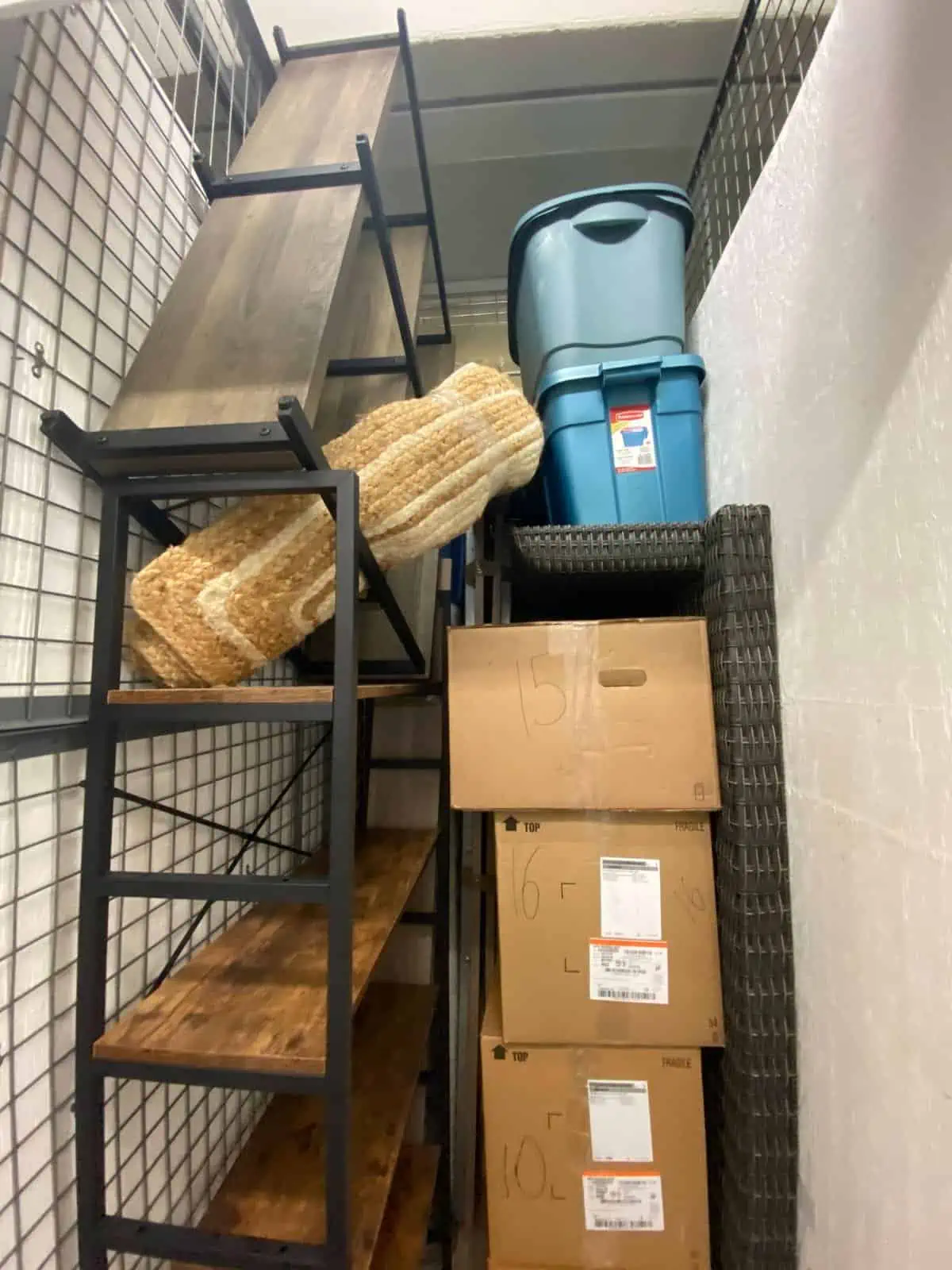
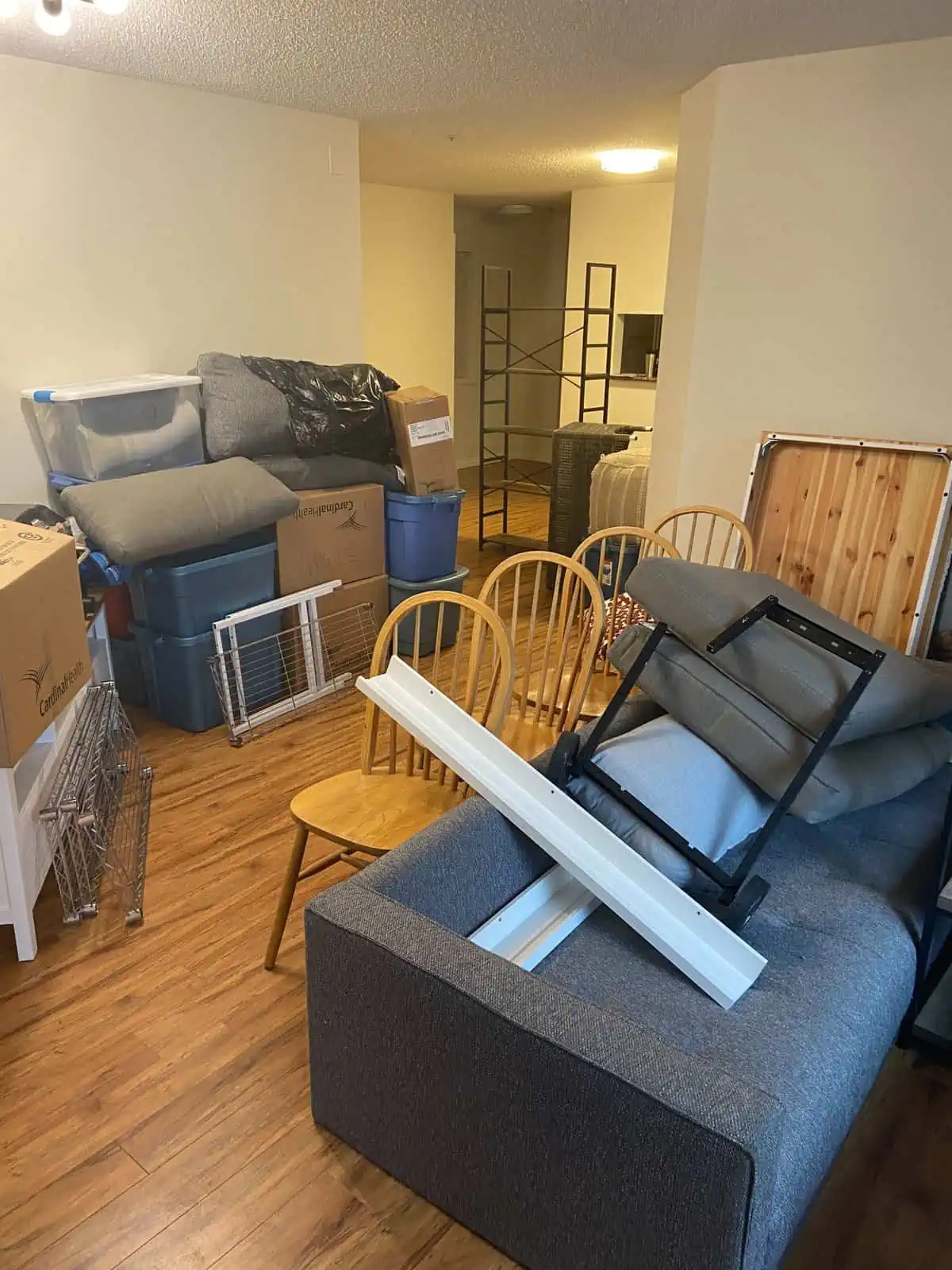
7. Create a bag of packing and moving supplies & leave it out until the last minute
Before you dive into your packing, create a bag of packing supplies that you’ll use throughout the process.
This will be very useful as you pack up your home. It will also serve as a home base whenever someone inevitably runs off with the tape gun. Tell them they have to return it to the bag!
What to put in your packing supplies bag:
- packing tape (+ extra rolls)
- tape gun
- reusable bags
- plastic bags
- newspaper or wrapping paper
- elastic bands
- permanent markers
Pro packing tip: Don’t put this bag away until the very last minute! There will always be one more box that needs taping or one more thing you need to throw into a Ziploc bag at the last minute (like your toothbrush).
Keep your packing supplies bag ready to use until the moving truck pulls in!
8. What to pack first when moving? Decor!
All right, now that we’ve decided on boxes and taken care of admin tasks, it’s time to start the real packing!
A lot of novice movers wonder what to pack first when moving. And the answer is… decor!
Decor items like framed photos, trinkets, vases, etc. are the best items to pack first because you don’t need them for daily life.
You can pack up all of the photos in your house months before your move date and not be affected at all. The same can’t be said for your closet, bathroom or kitchen items!
Another plus to packing decor items first is that often these items are fragile, bulky or oddly-shaped. By packing decor first, you give yourself the most time to source what you need to keep these items safe and carefully pack them.
You don’t want to be packing up all of your glass items in a rush on moving day – that’s a recipe for breaking something!
9. Get a 2 for 1 when packing your clothes
This is one of my favourite packing hacks when packing clothes for moving: Rather than just pack clothing on its own, use clothes to assist in your other packing.
Clothing (and linens and towels) are the perfect thing to wrap valuables, add light weight to too-heavy boxes, and fit in awkward nooks and crannies.
When I start packing, I always bring a handful of clothes with me to help wrap items and fill out boxes. I put mugs in socks, wrap frames in sweaters and fill boxes with coats.
Before you know it, you’ll have packed half your closet just by packing up the rest of the house!
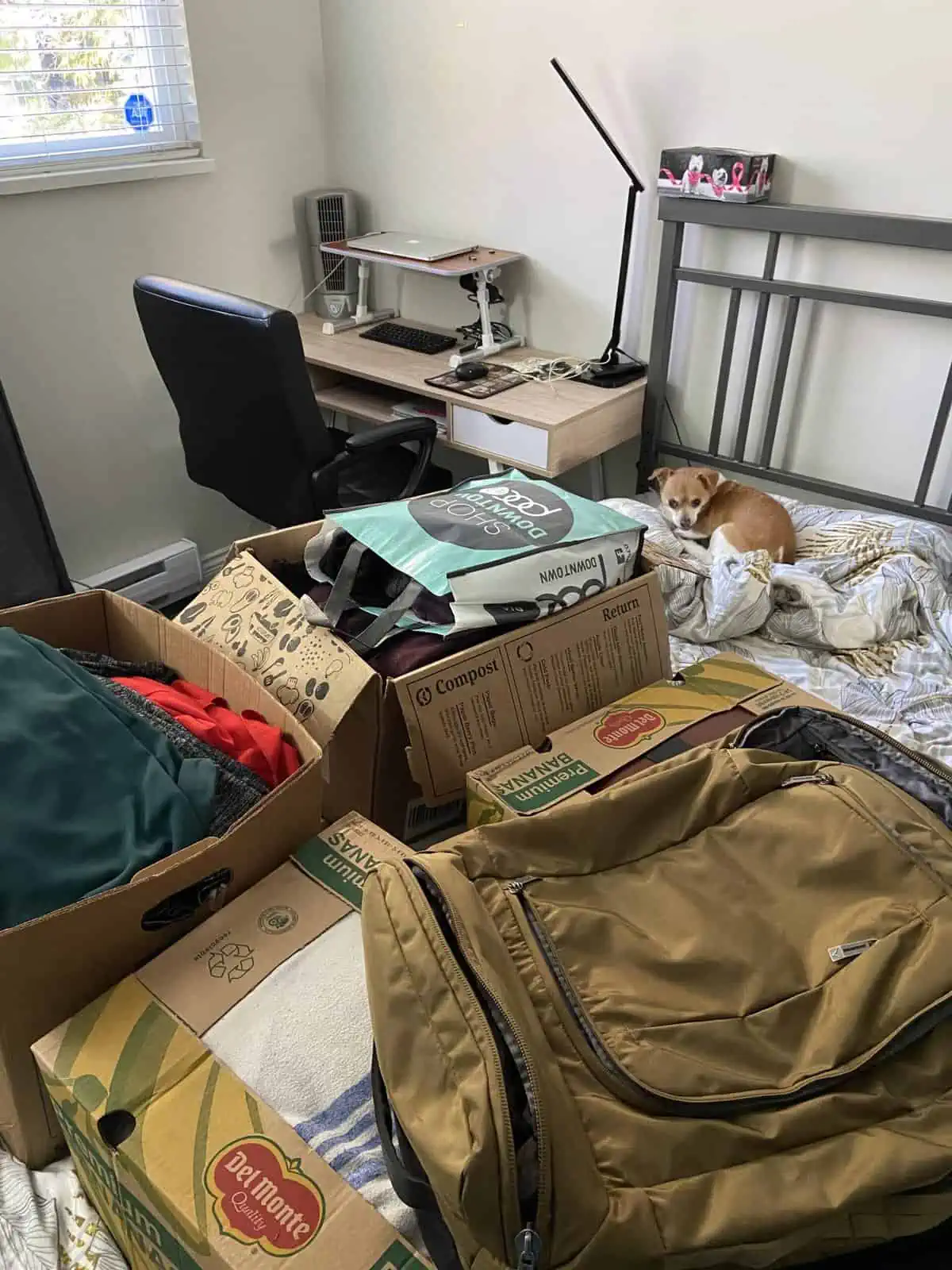

10. The best way to pack clothes for moving
Once you’ve used as much clothing as possible in the 2 for 1 hack above, the next best way to pack clothes for moving is actually quite simple.
Leave all of the clothing in your closet on its hangers but tie the hangers together with elastic bands. Then slide all of the clothes (still on hangers!) into a garbage bag.
Voila! Your entire closet has just been packed.
This is the simplest way to quickly pack a closet and, bonus, it’s just as easy to unpack on the other side!
11. Don’t pack your boxes too heavy
When I was a kid helping out with house moves, I used to think the mission was to fill every box as full as possible. I prided myself on getting my whole book collection into one cardboard box.
Sure, it cut down on the number of boxes I needed, but my technique also might have broken a few boxes – and backs!
Now I’ve learned there’s an art to filling a box perfectly – you need to pack in a way that gets the most items in without making the box too heavy.
Start by packing smart; similar items from the same area of the house should be packed together.
But don’t forget about the weight! As you’re filling the box, regularly give it a lift to see how heavy it’s feeling.
Once the box feels heavy, look for light-weight items you can add to finish filling the box.
Packing hack: This is where light-weight clothing and linen once again comes in handy!
12. Pack heavy or awkward things into suitcases
While I’m obviously pro-box when it comes to moving, sometimes a box isn’t the right vessel for the job. For items that are extra heavy or extra awkward, I suggest packing into a suitcase.
For example, we like to pack our kitchen pots and pans into suitcases.
With the handles, these items fit strangely into boxes; you end up only being able to get one pan into a box, which feels like a waste. Since our suitcases are longer and more malleable, we’re able to fit in more.
Suitcases are also good for heavy items, like books or weights, since no one will have to lift them. You can simply roll a suitcase to its next destination!
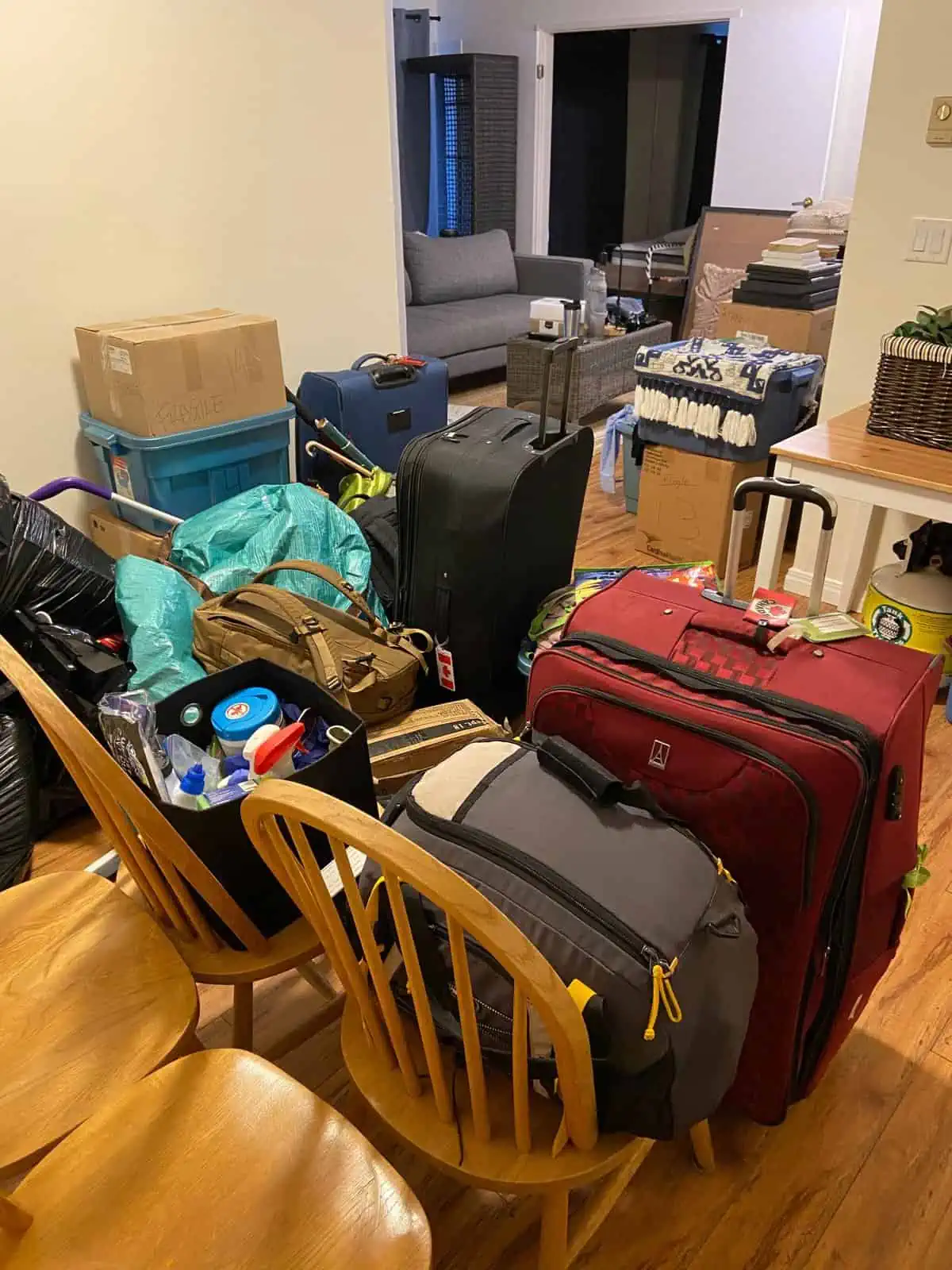
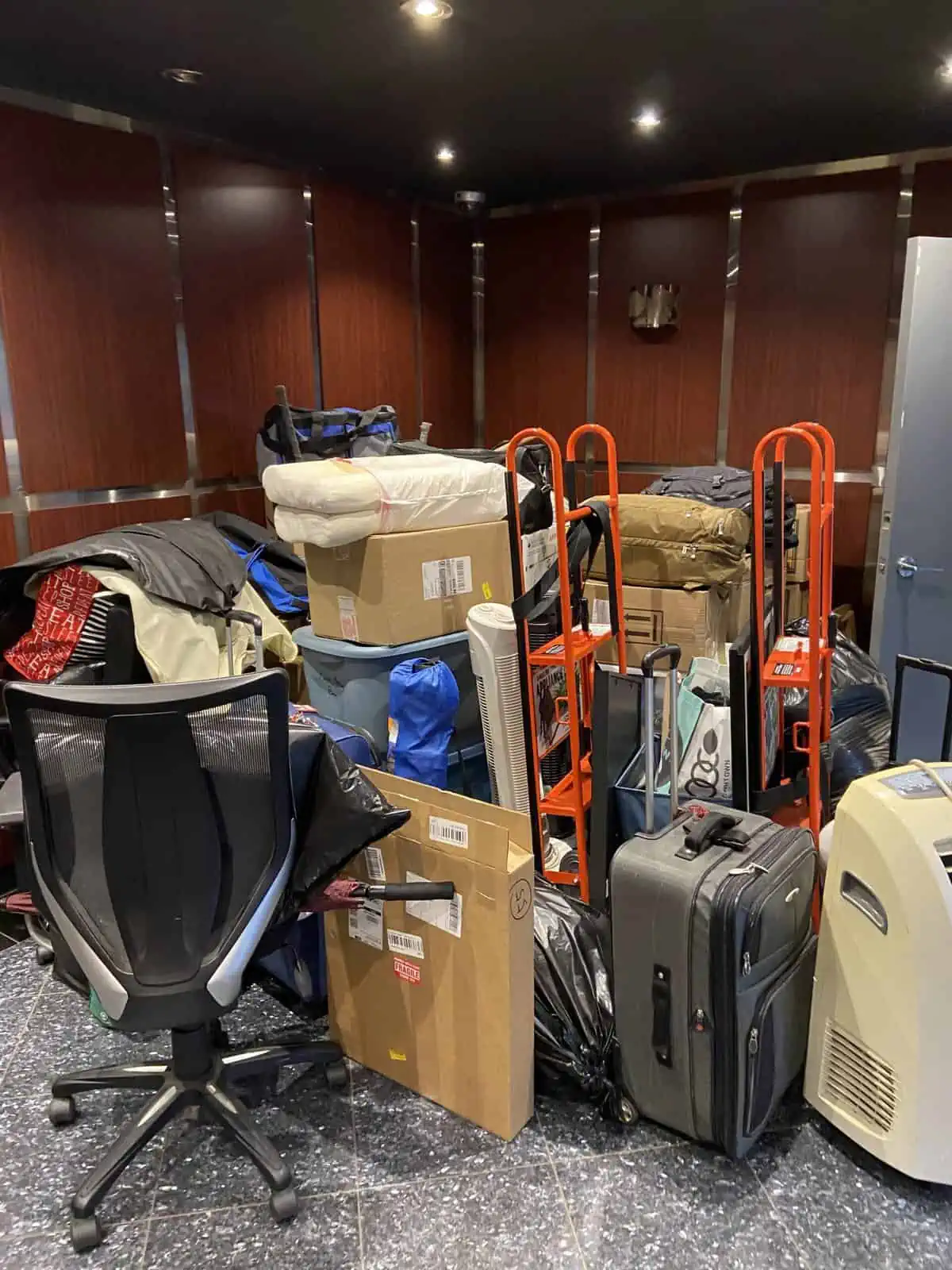
13. The best way to pack shoes when moving
The best way to pack shoes when moving really comes down to the type of shoes you’re packing and how many you have.
If your shoes are light-weight and you don’t have too many, I find the best way to pack them is into backpacks or duffel bags.
The bag-method works well because shoes are oddly shaped, meaning they can more efficiently fit in a bag rather than a box. And if they’re light, you can easily carry the bag in your hand or on your back.
Don’t forget that you can also put things inside of your shoes when moving! A sturdy shoe can be a good place to store breakable items or small things that might get lost in big boxes.
14. How to pack jewelry for moving
Once again, how to pack jewelry for moving will depend on how much jewelry you have and how valuable it is.
If your jewelry pieces are very valuable, you’ll likely want to put them back into their individual boxes, if you still have those.
For less valuable jewelry, you can ditch the boxes and save space by putting all of your pieces into bags, such as Ziplocs.
If you’re worried about losing small pieces of jewelry, use tape – such as taping a pair of earrings to a small piece of cardboard.
And if you’re worried about necklaces or bracelets getting tangled, string them through a straw before putting them in the bag.
15. How to pack books for moving
For bibliophiles, you’ll want to take extra care when packing your books for moving. Packing and moving books sounds straight forward, but because they’re so heavy, it can become a problem.
In order to not damage your books, I’d suggest packing into a sturdy box, bin or suitcase where the books can be lined up and not moved around.
Make sure you’re using a heavy-duty box or bin that won’t break under the weight of the books.
If your book boxes are getting too heavy, forget about packing all of your books together. Instead, pack a few boxes half-full with books and add light weight things on top (pillows, tissue boxes, clothing, etc.).
Pro packing tip: If the boxes are still pretty heavy, do your movers a favour and write “Heavy!” on the box so they can prepare their backs!
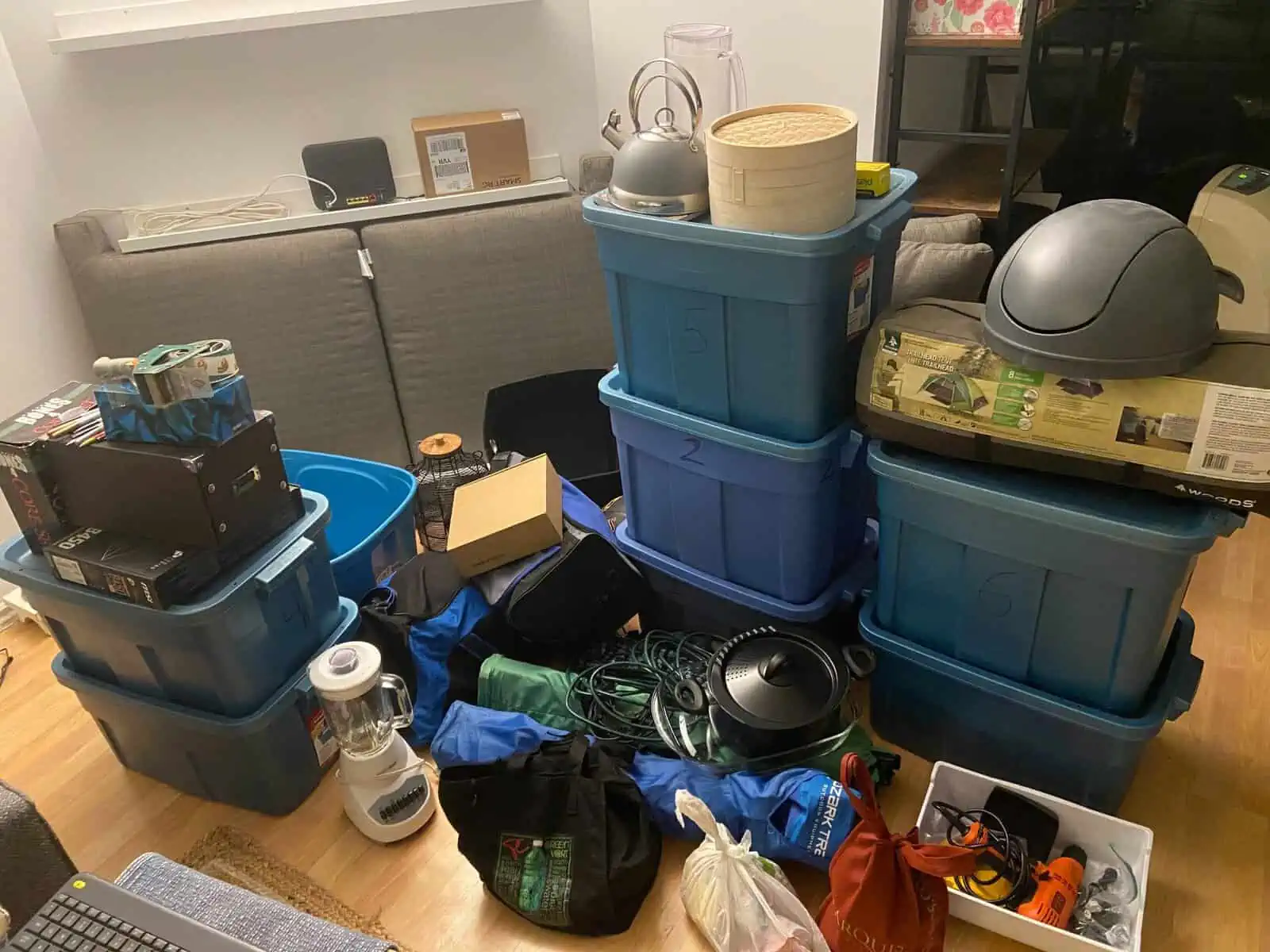
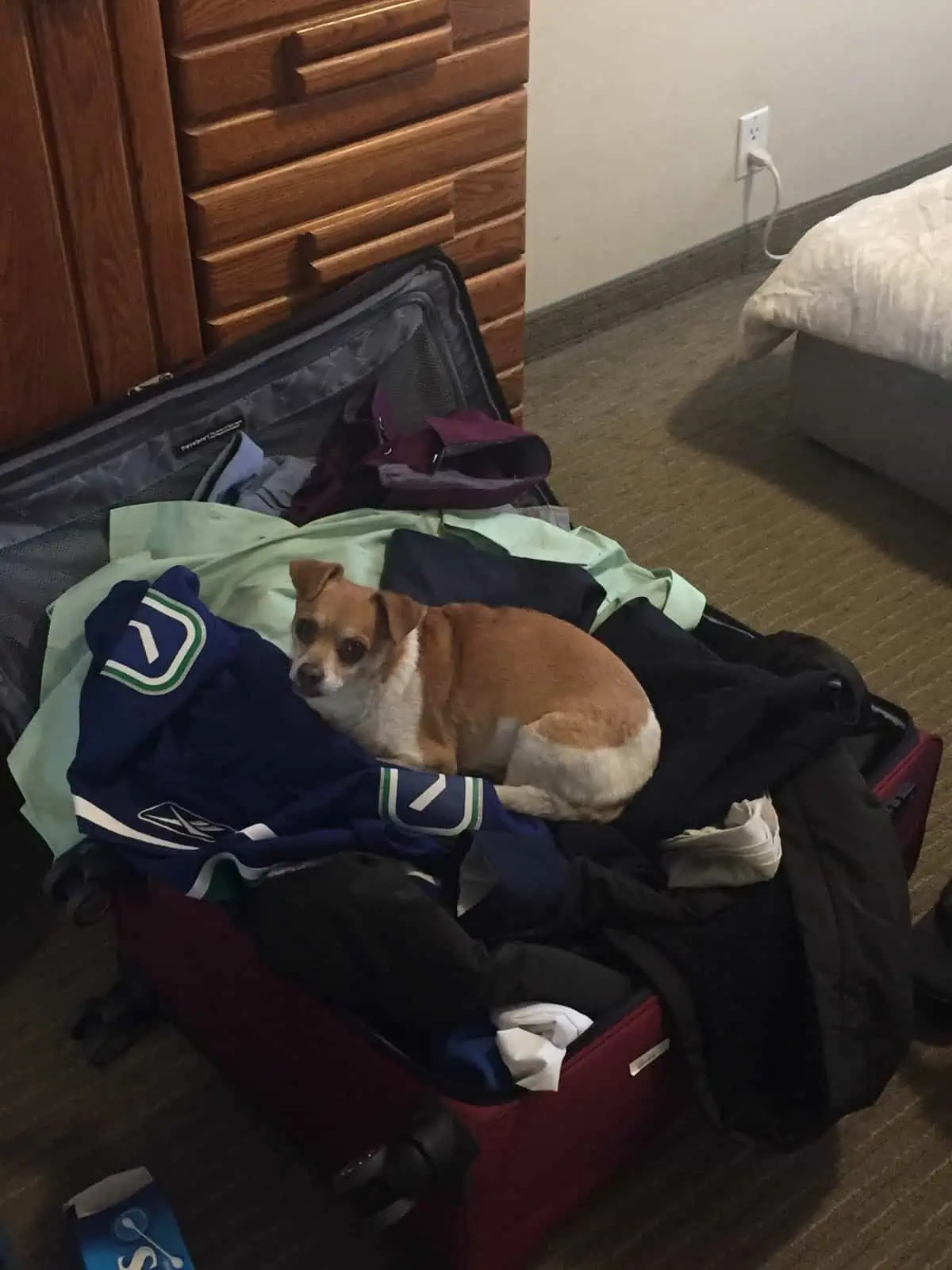
16. Take everything out of drawers/cabinets and leave it out in the open
As you finish packing up a room, you may find some stuff still has to be left behind for daily life. Things like your basic toiletries and dishes probably won’t go into boxes until the last minute.
In order to not forget these items, I suggest taking everything out of cabinets and drawers and leaving them out in the open, like on an open shelf or countertop.
This works for two reasons:
- You won’t forget anything because it’s out in the open rather than hidden away.
- You now have a visual sense of what’s left to pack. This will tell you how many more boxes/bins you need for your last minute items.
17. Order take-out meals for the last few days so you can pack up your kitchen
We did this when we moved from our Yaletown apartment to our Fairview apartment and it was a total game changer: Order enough take-out to last you for the final days before your move!
Not only is it fun to indulge in a giant take-out order, especially if you have a neighbourhood restaurant you’ll be leaving and want to order from one last time, but this also means you can fully pack up your kitchen.
You can put away all of your cookware and only keep out a few plates and pieces of cutlery for reheating the take-out.
Plus, you’ll save yourself a lot of time and energy! Instead of stressing about cooking and using up all of your perishable items in the final days, you can relax knowing that meals are taken care of.
Of course, you can also do this by meal prepping and batch cooking a few days beforehand if you don’t want to order an obscene amount of take-out.
18. Bring over a few loads ahead of your official move day
If you have the option to access your new place early, I highly recommend bringing over a few loads of things before your official moving day.
This is especially key if you’re not hiring movers and doing the move yourself. It can be nice to break up the heavy lifting by doing it over the course of a few days.
In the past we’ve brought over all of the moving boxes in our car a few days early and then saved the large furniture for the U-haul truck on moving day. This works well if you’re worried about everything fitting in your truck!
If you’re hiring movers, it can still be handy to bring some items over ahead of time.
For example, you may want to move fragile items that can’t be boxed up well by hand. During our last move, we brought over Colin’s fancy computer (strapped in the backseat!) and vases with dried flowers (held in my lap) by car ahead of the movers.
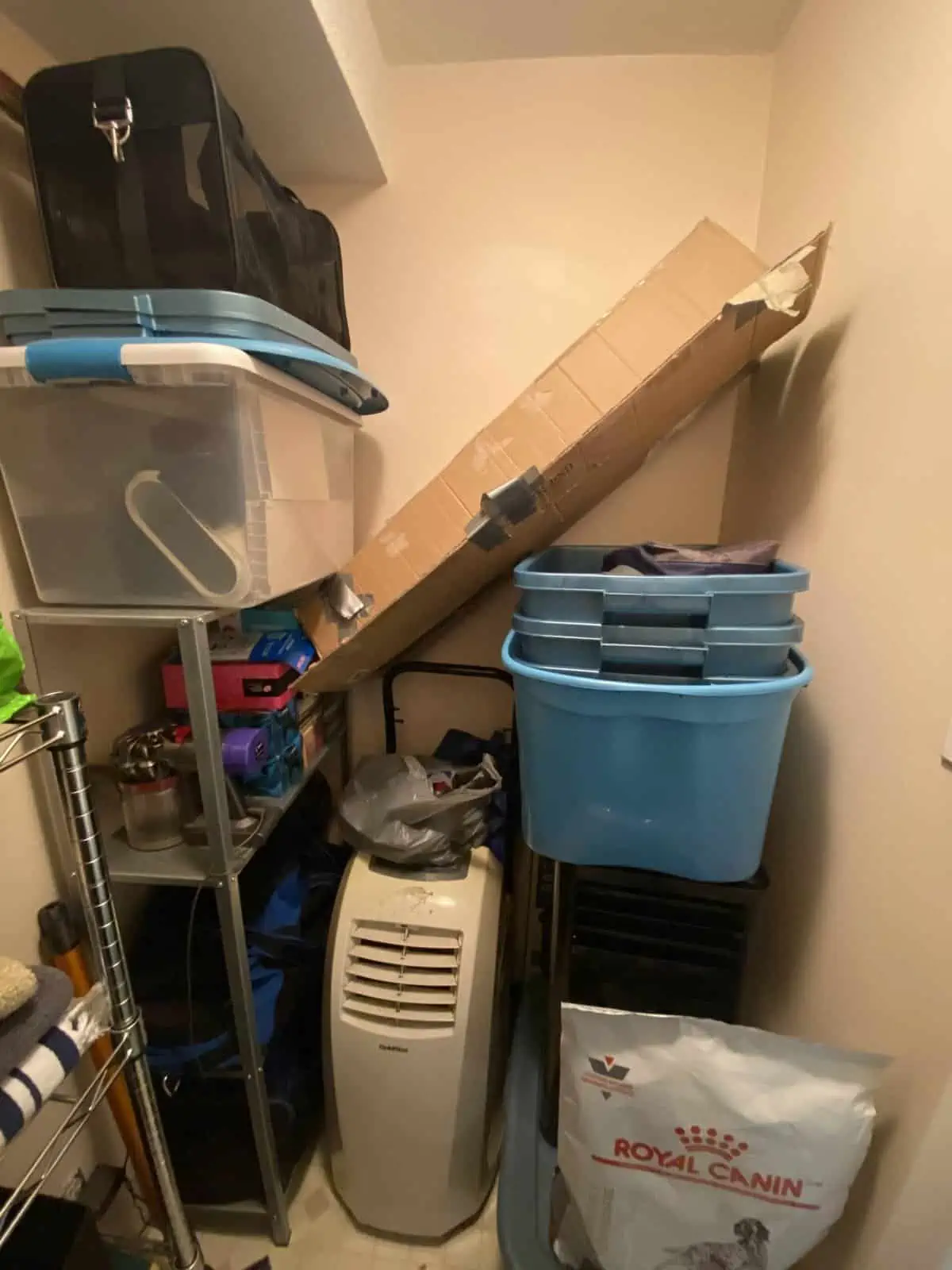
19. Pack an essentials bag
Speaking of essentials, another packing and moving tip I swear by is having an essentials bag. This is a bag (or box/bin) that is full of things you’ll need as soon as you arrive at your new place.
Instead of opening up every box to find your toothpaste or phone charger, you can rely on your essentials bag until you have more time to fully unpack.
Pack an essentials bag like you would pack a bag for a weekend trip. What things do you need every day/night?
Your essentials bag may include things like:
- keys or paperwork you need for the new house
- daily-use toiletries (including towels and a shower curtain)
- phone chargers and laptops/tablets
- clothing you want to wear in the next few days
- anything you’ll need for work
- medication
- snacks and water bottles
- toilet paper (you don’t want to be stuck without it!)
20. Give yourself a free day before the move for last minute tasks
If you have the flexibility, I highly recommend keeping a full day (or half day) free before your move. It’s nice to not have to come home from work and move the next morning.
The aim is to be mostly packed before this day, rather than using this day to do a ton of packing. Instead, use it to complete any last minute tasks.
Last minute packing and moving tasks might include:
- Packing up the last minute items you left out
- Doing a move-out clean
- Taking apart last minute furniture, like your bed or couch
- Meeting with your realtor or landlord
The last thing you want to do is still be packing when the movers show up. Give yourself a buffer day so you’re not stressed and ready for your house move.
Bonus points if you can give yourself an extra day or two on the other side of your move to unpack!
21. For renters: Take photos at your new place before you unpack
If you’re moving into a rental, before you start unpacking and moving in, do a walk through of the space.
Technically, your landlord should do a walk-through with you. But if they don’t (or even if they do), slowly walk through the home and take photos of any damage you see.
If you see something that needs to be fixed, let your landlord know ASAP. If it’s not an issue, I still recommend taking a photo and holding onto it.
That way, if your landlord tries to charge you for damage when you move out, you can use the photos to prove the damage was already there when you arrived.
I have never had a problem with a landlord trying to do this, but I like the idea of protecting myself by having the photos just in case.
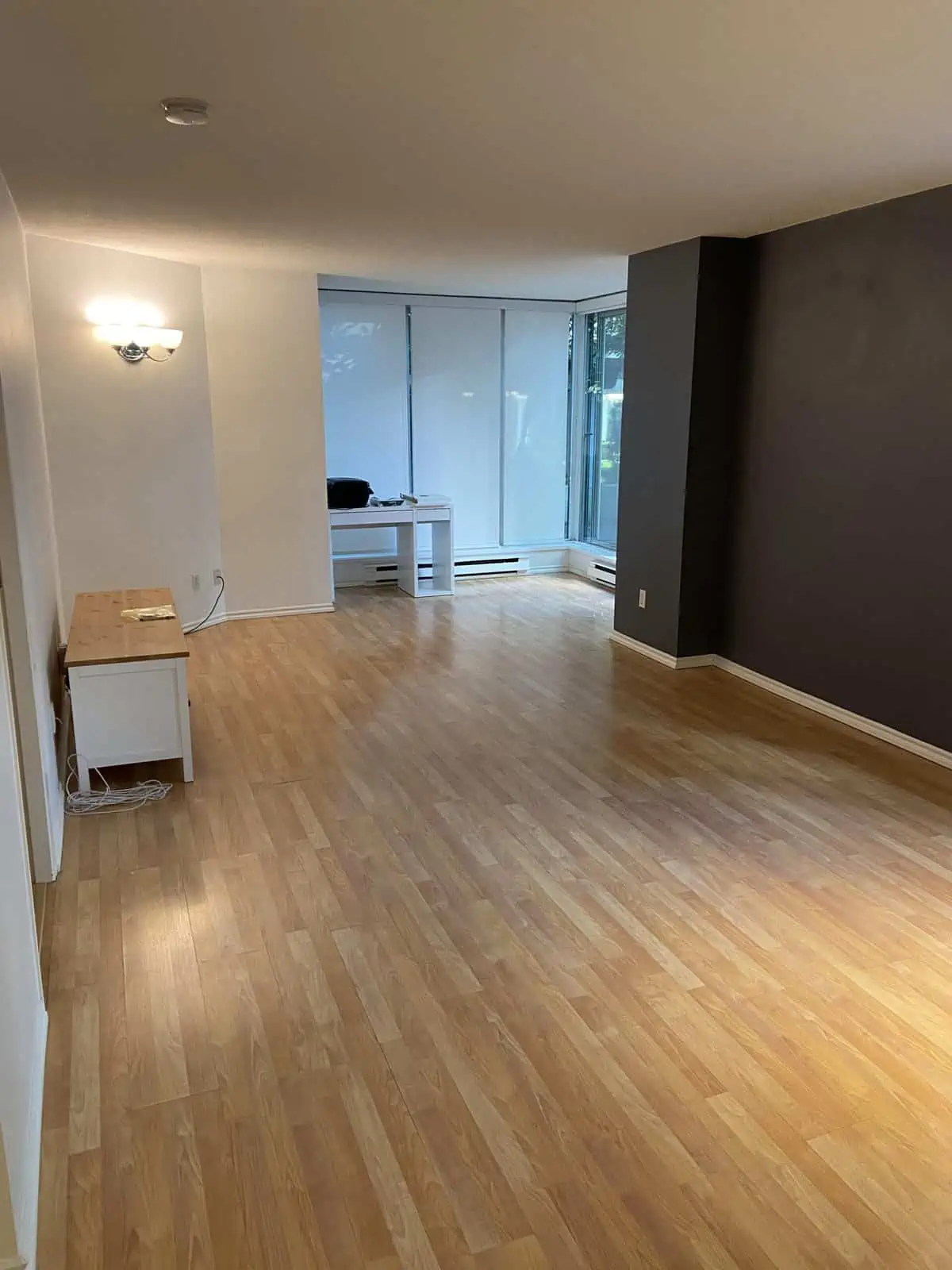
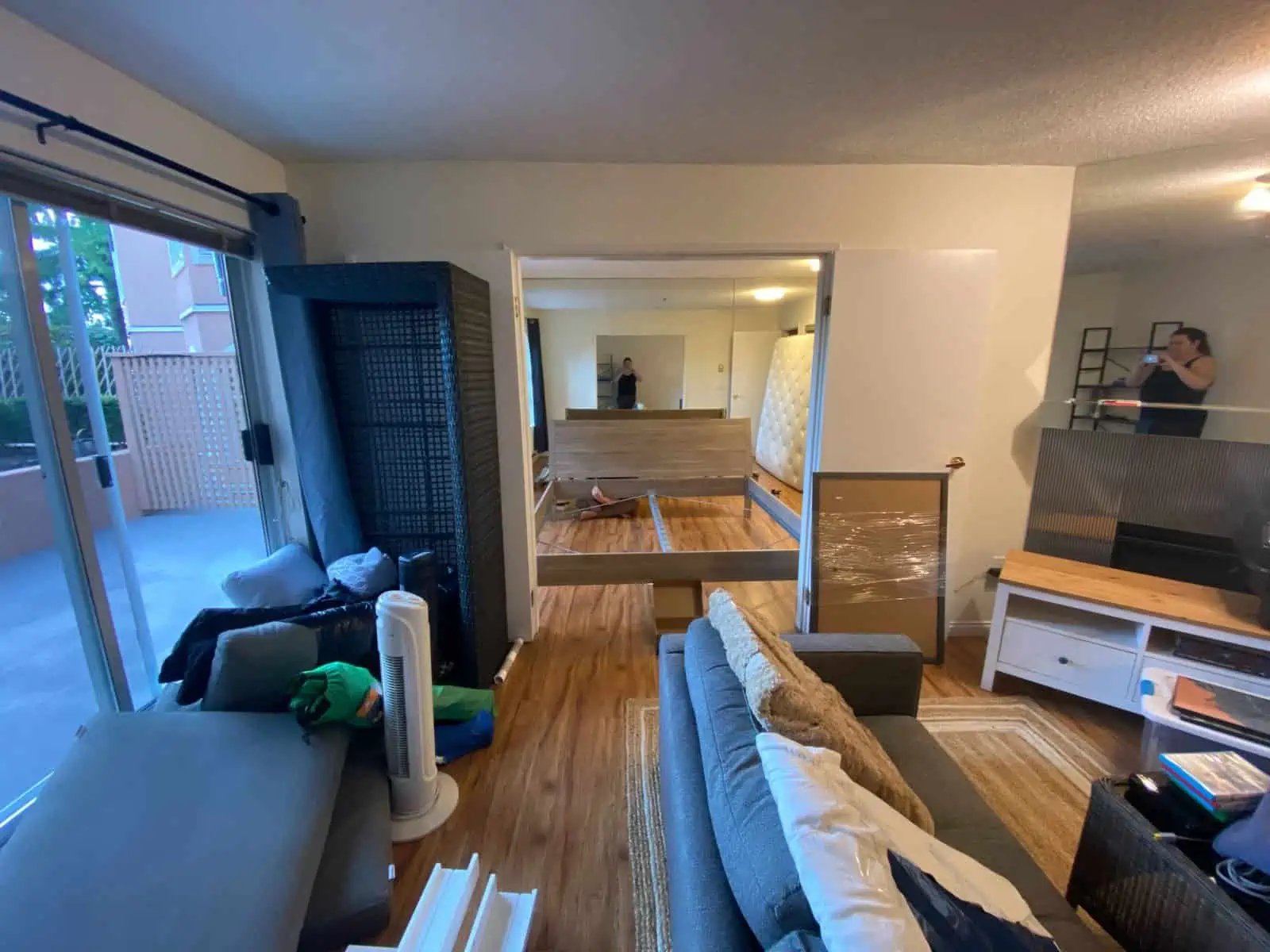
22. Prioritize how you unpack
Just like there’s an art to packing, there’s an art to unpacking too.
Ideally you have a full day or a couple of days that you can dedicate to unpacking. If not, it’s even more important that you prioritize how you’ll unpack.
First, unpack the essentials bag you put together and start setting up the things you’ll need right away – such as building your bed or putting perishable items into the fridge.
From there, it can be tempting to start with the fun stuff, like decor, or even just live out of boxes until you find the energy to tackle them. I know people who still haven’t fully unpacked after months of being in a new place!
Instead, I suggest you take on one room at a time, starting with the most important ones: the bathroom and the kitchen. You’ll need both of these rooms to be usable in order to function well in your new space.
If you have the time, unpack the bathroom and kitchen fully. If not, consult the list on your phone to see which boxes need to be unpacked first.
Trust me, you’ll feel much better if you can find the plates and shampoo rather than if your closet is fully unpacked or pictures are up on the wall.
I would prioritize unpacking in this order:
- Essentials bag and things you need immediately (e.g. bed)
- Main bathroom & kitchen
- Rooms you use most often (e.g. living room or office)
- Closets, storage and rooms not used often
- Decor and outdoor areas
23. For renters: 5 bonus tips for packing and moving out
A few more packing and moving tips before I let you go! These ones are specifically for renters, but homeowners may find them handy too.
- Hire cleaners if you can. Moving is stressful and if you can afford to hire cleaners for a few hours, it might be worth it. If not, make sure you leave yourself enough time and the right supplies to clean properly. You don’t want to lose your deposit because your place isn’t clean and you don’t want to leave a gross place for the next tenants.
- Arrange a move-out time with your landlord. Set a time with them to do a walk-through of the apartment together, return your keys and receive your deposit back (assuming nothing is damaged).
- Read through your lease. Do you have to remove all of your belongings or can you leave some stuff behind for the next tenants? Are you responsible for anything during the move-out process? For example, you may have agreed to steam clean the carpet.
- Put things back the way you found them. If you made any changes to your space, make sure it’s back to how you found it. While regular wear and tear is usually acceptable, your landlord might not like the wallpaper you hung or light fixture you added. Hopefully all of your changes were reversible and renter-friendly!
- Walk through your apartment before your landlord. Before your landlord comes to do the official move-out walk-through, do a walk-through of your own. Give yourself time to take care of any last minute fixes or cleans that might be needed.
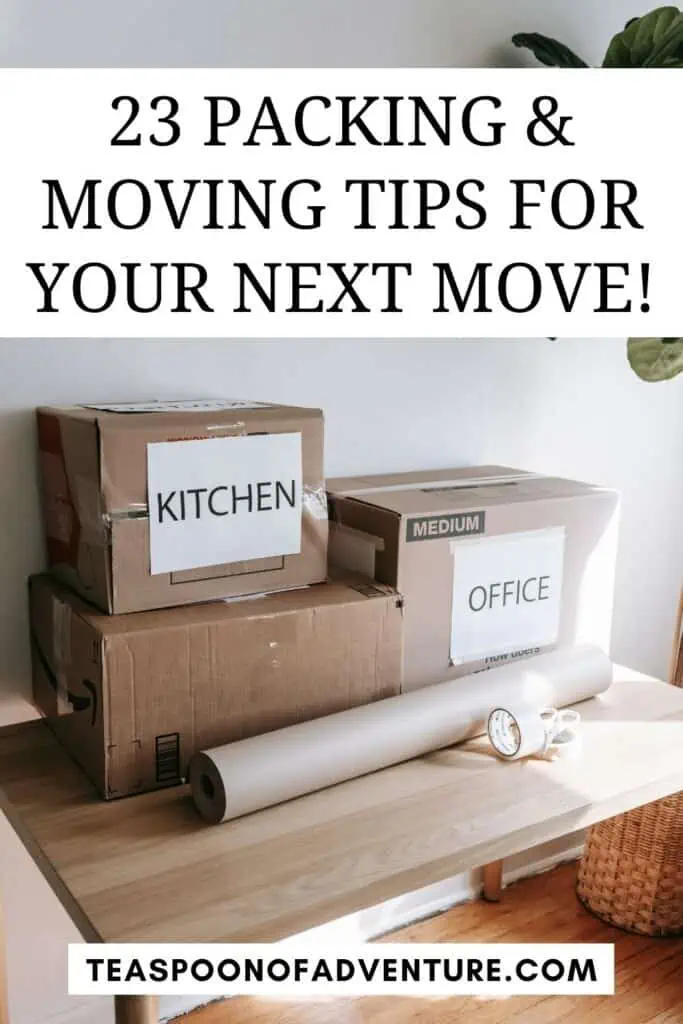
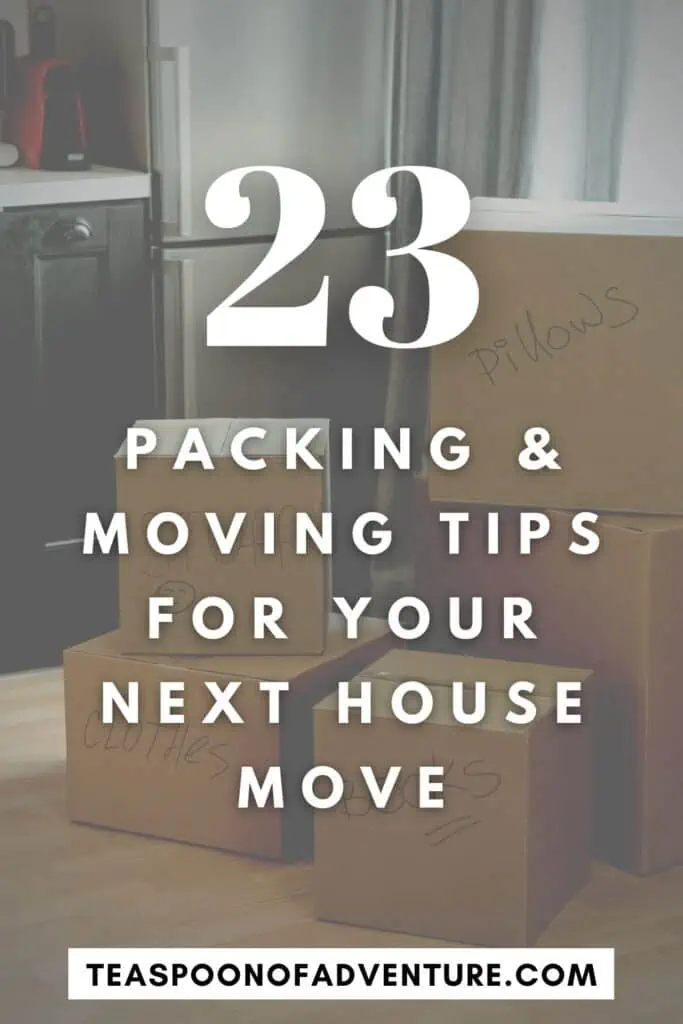
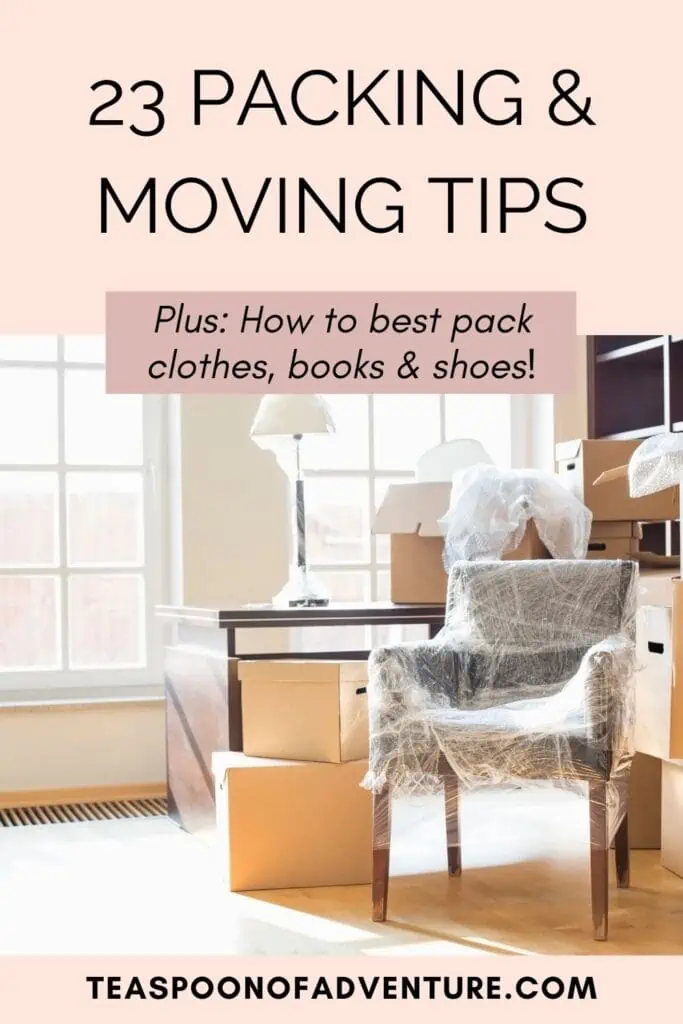
Packing up: Good luck with your next move!
I really do think there’s an art to packing and moving houses that, for better or worse, I’ve mastered over the 40 house moves of my life. So I hope you found my packing and moving tips above valuable!
While packing up an entire house and moving – whether it’s across the world or across the street – can feel daunting, you can make it very manageable.
Start early and start small. I find the worst moves are the ones where I’m rushing to get everything packed at the last minute or overwhelmed trying to pack everything at once.
Read through my tips and have a plan of action. That way, your move can be as stress-free and simple as possible. It probably won’t be a fun time, because you still do have to move houses, but hopefully you won’t be tearing your hair out.
Just keep in mind how wonderful life will be in a few weeks when you’re all unpacked and settled into your new house.
Keep that goal in mind and I promise, you will survive your move. Good luck and I hope your new place is awesome!



